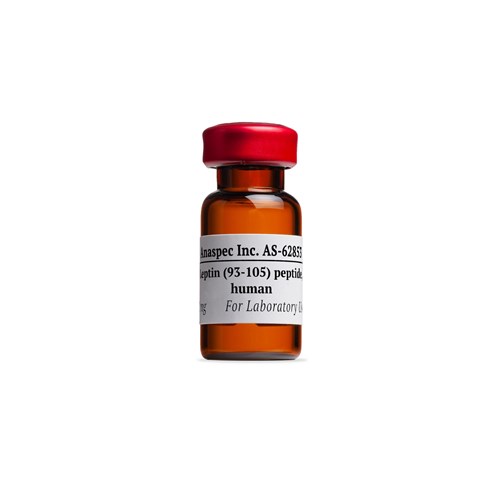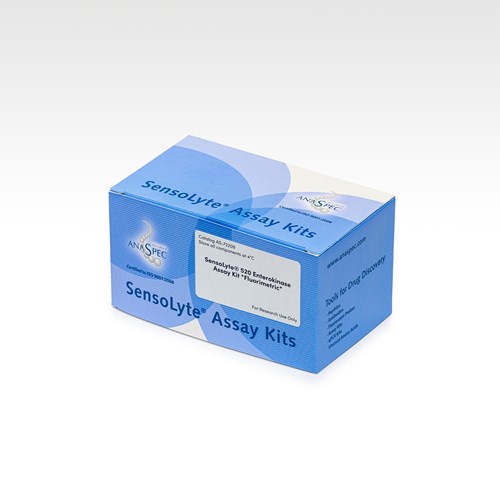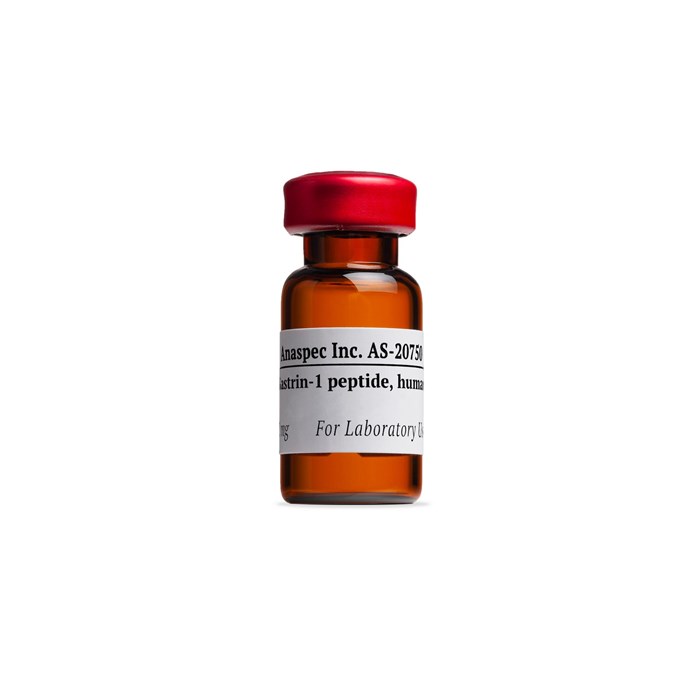Gastrin-1, human - 1 mg
- Cat.Number : AS-20750
- Manufacturer Ref. :
-
Availability :
In stock
Alternative choices
Gastrin-1 is also referred to as Gastrin-17 or “Little Gastrin.” Secretion of gastrin is induced by food intake and causes the release of gastric acid in the stomach. Secreted by the G cells in the gastric mucosa, it is one of the major bioactive forms of gastrin found in tissue and plasma (the other bioactive form is Gastrin-34 or Big Gastrin). Both Gastrin-17 and Gastrin-34 are carboxy-amidated and partially tyrosine sulfated. Binding of Gastrin to the CCK2/gastrin receptor requires carboxy-amidation, however sulfation is not necessary for binding to the receptor. Binding of Gastrin to the CCK2/Gastrin receptors on parietal cells of the stomach causes them to secrete hydrochloric acid (HCl) and stimulates lectin-like protein Reg expression via activation of PKC and RhoA. Gastrin also plays a role in release of Histamine and Pepsinogen.
Specifications
| Chemistry | |
| Sequence one letter code |
|
|---|---|
| Sequence three letter code |
|
| CAS registry number |
|
| Molecular Formula |
|
| Molecular Mass/ Weight |
|
| Modification | |
| Conjugation |
|
| Quantity & Purity | |
| Purity |
|
| Storage & stability | |
| Form |
|
| Storage Conditions |
|
| Activity | |
| Biomarker Target | |
| Research Area | |
| Sub-category Research Area | |
| Usage |
|
| Source | |
| Source / Species |
|
You may also be interested in the following product(s)



Citations
Mesenchymal Cells Appearing in Pancreatic Tissue Culture Are Bone Marrow-Derived Stem Cells With the Capacity to Improve Transplanted Islet Function.
Stemm Cells . 2010 Jan 01 ; 28(1) 140 | DOI : 10.1002/stem.259
- V. Sordi
Omeprazole and PGC-formulated heparin binding epidermal growth factor normalizes fasting blood glucose and suppresses insulitis in multiple low dose Streptozotocin diabetes model.
Pharm Res . 2013 Jun 11 ; 30(11) 2843 | DOI : 10.1007/s11095-013-1112-6
- GM. Castillo
References
N-Terminal Sequence of Human Big Gastrin: Sequence, Synthetic and Immunochemical Studies
Hoppe-Seylers Z Physiol Chem . 1980 Nov 01 ; 361(11) 1719 | DOI : 10.1515/bchm2.1980.361.2.1719.
- A. Choudhury
- et al
Digestive Function of the Stomach
Digestive Dis . 2014 Apr 10 ; 32(3) 186 | DOI : 10.1159/000357848.
- A. O’Connor
- et al
Gastrin: Old Hormone, New Functions
Pflügers Archiv . 2005 Jan 01 ; 449(4) 344 | DOI : 10.1007/s00424-004-1347-5
- G. Dockray
- et al
New Consensus Features for Tyrosine O-sulfation Determined by Mutational Analysis
JBC . 1997 Aug 29 ; 272(35) 21700 | DOI : 10.1074/jbc.272.35.21700.
- JR. Bundgaard
- et al
Ghrelin and Gastric Acid Secretion
World J Gastroenterol . 2008 Nov 07 ; 14(41) 6334 | DOI : 10.3748/wjg.14.6334.
- K. Yakabi
- et al
Hypergastrinemia--diagnosis and treatment.
Wien Klin Wochenschr . 2006 Dec 31 ; 119(19-20) 561 | DOI : 10.1007/s00508-007-0897-x.
- B. Niederle

